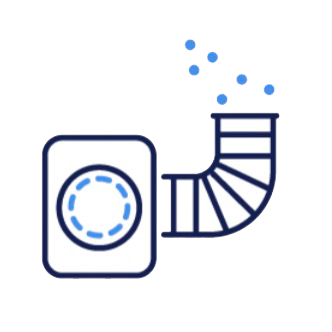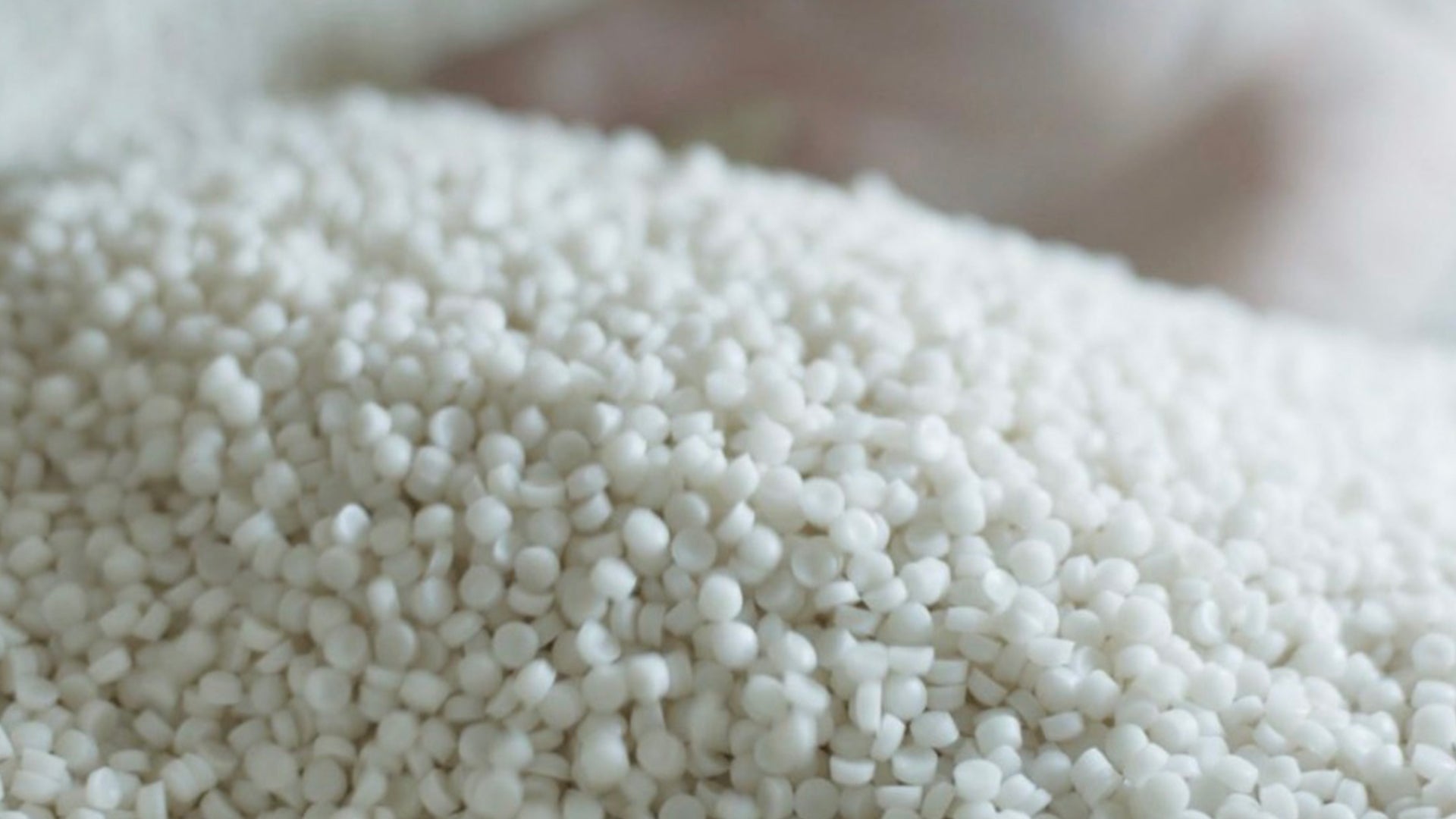Understanding the basic principles of dryers
Dryers have come a long way since their invention. There are various types available to suit different needs and preferences. Before moving towards the types, let's read about the usage of dryers:
How do dryers work?
Basically, all dryers operate on the same principle but different levels of functionalities. They use heat, airflow, and tumbling to remove moisture from clothes.Here is the step by step process:
● Heating element – Dryers generate heat through a gas burner or electric heating element.
● Airflow – The fan of the dryer circulates the heated air throughout the body. This heat absorbs the moisture from the clothes.
● Tumbling – The body rotates continuously to keep the clothes in motion.
● Ventilation – A vent is an essential part of the dryer because moist air expelled from the dryer through a vent.
Types of dryers
There are various kinds of dryers based on their energy source and consumption, efficiency, and venting options:
Electric Dryers
The most common and most used type of a dryer. These are based on using heating elements to generate heat. They are easy to install. Moreover, they are less expensive. But the operational cost depends upon electricity rates.
Pros
● Easy to install. You can install it by yourself.
● Electric Dryers are widely available in the local market.
Cons
● Operational cost can be higher.
● It takes a lot of time to dry clothes.
Gas Dryers
Powered by natural gas or propane gas. Gas dryers are energy-efficient than electric dryers. They typically dry clothes faster than electric dryers. But they require a proper connection of gas and professional installation.
Pros
● Faster drying process.
● Lower operational cost.
Cons
● Higher upfront cost.
● Need a gas hookup.
Ventless Dryers
It is an ideal home appliance for houses without access to an external vent. Ventless dryers use a heat exchanger to remove moisture. Ventless dryers require condensers and heat pumps.
Pros
● They are energy-efficient.
● There is no need for external venting.
Cons
● They take a lot of time to dry clothes.
● Cost is comparatively higher than electric and gas dryers.
Compact Dryers
As the name said, these are smaller in size. If you have a small apartment or flat, it is perfect for limited space. They have two categories: vented and ventless.
Pros
● It is ideal for smaller homes.
● There are different energy-efficient options available.
Cons
● They take a longer time to dry clothes.
● Smaller capacity.
What is the role of dryer hoses?
The dryer hose is a critical and important component of your dryer setup. Hoses are responsible for venting moist air and lint out of the dryer and your home.
People who choose poorly functioning hoses can lead to inefficient drying, increased energy consumption, and even fire hazards. One must choose a high-quality and energy-efficient hose.
Types of dryer hoses
There are various types of dryer hoses. It comes with different materials. Each dryer hose has its own set of features, advantages and disadvantages.
1. Aluminum foil ducts
It is the most common and inexpensive type of dryer hose. Aluminum foil ducts are flexible in nature. You can easily install it without any professional help. They are resistant to crushing and provide enough airflow.
Pros
● Pocket-friendly, easy to install, flexible and easy to use.
Cons
● They can tear easily.
● They are less durable than other available options in dryer hoses.
2. Semi-Rigid Aluminum Ducts
These semi-rigid ducts offer better durability. Moreover, they provide more capacity for air flow than pure aluminum ducts. Their structure is more rigid so that they can avoid crushing.
Pros
● You can use it long-term.
● Provide better airflow.
● The rigid structure makes it crush-resistant.
Cons
● They are less flexible.
● You need professional help to install them.
3. Rigid Metal Ducts
One of the best and safest dryer hose options. It is one of the most durable options. The rigid metal ducts provide excellent airflow. They are less prone to lint buildup. The installation process is quite difficult but offers long-term performance.
Pros
● Excellent durability with best airflow.
● There are less chances of fire hazards.
Cons
● Installation is difficult.
● They are way more expensive than other dryer hoses.
4. Vinyl or Plastic Ducts
Back at the time, these vinyl ducts were popular but now, they are no longer recommended for dryer venting. It is because of their flammability and tendency to collapse. It is the major reason to cause lint buildup and fire risks.
Pros
● They are generally used ventilation exhaust areas.
Cons
● Fire hazards, less durable, lint buildup, and pipe blockages.
● They are not recommended.
5. 6 layer Dryer Vent Hose
A new and latest option with upgraded features of aluminum foil ducts and semi-rigid aluminum ducts. It is more durable and flexible than all other options. They are designed to withstand the harsh conditions like drying of heavy materials. You don't need a professional service provider to install this.
Pros
● Provide flexibility, durability, and easy installation process.
Cons
● They are more expensive than other hoses.
● Their availability is limited in the market. Check and book as fast as you can.
Installation tips
Accurate and proper installation with recommended guidelines and instructions are crucial. It helps in the safety of the appliance and ensures efficiency. Here are some installation tips:
● Choose the right hose that suits your dryer and venting type. Try to avoid PVC ducts. Prefer metal ducts because of their durability and efficiency.
● Choose a shorter hose. A shorter hose reduces the risk of link buildup. Also, it helps to pass airflow easily.
● Avoid kinks and crimps. Whenever installing a hose, install it without sharp bends or kinks. It can resist airflow and increase the chances of lint blockages.
● Use metal wires or foil tapes. It is strictly prohibited to use duct tapes. It prevents leakages and short circuits.
● Always vent your dryer to the outdoors because inside the house, it can increase humidity, heat, and moisture in the air. It can lead to mold and fungus growth.
How to maintain dryer hoses?
Time to time or frequent maintenance is required for efficient and long time usage. Here are some tips to maintain the dryer hoses.
● Clean the lint trap before and after of every load.
● Check the hose regularly for damages or blockages.
● One must clean the hose at least annually. Disconnect the hose from the dryer and clean the lint, debris and dirt.
● Frequently check for leakages especially if you notice longer drying times.
Common dryer hoses problems and solutions
It doesn't matter that you are using it with full care and precautions but some issues still arise. Here are some common problems and solutions:
1. Long Drying Time
● Possible Causes – A clogged vent, lint buildup, or a kinked hose.
● Solution – Frequently clean the hose and vent. Straighten the kinks and make sure airflow is rotating properly.
2. Overheating Dryer
● Possible Causes – Airflow is not passing due to blocked hose or vent.
● Solution – Clean the hose otherwise replace the hose. Moreover, check the vent for obstructions.
3. Burning Smell
● Possible Causes – Lint or dirt buildup in the hose or dryer. Another reason can be a damaged connection or hose.
● Solution – Stop using the dryer as soon as possible. Clean or replace the hose. Check the electric and gas connection.
4. Increased Energy Bills
● Possible Causes – Blocked or reduced airflow leading to longer drying times.
● Solution – Read the above mentioned maintenance tips. Moreover, check the damage or obstruction in the hose.
5. Mold Growth
● Possible Causes – Due to improper venting or a blocked hose, moisture and mold can grow.
● Solution – Clean the hose, fix any leaks, and clean the vent. Use mold free sprays to prevent it from mold.
Final Words
In conclusion, you must understand different types of hoses and dryers from different companies. Read the article to select the right material for the hose that suits your dryer. Follow the installation process and maintenance guidelines to prevent issues like heating, energy consumption, and fire hazards. With the care and precautions, your dryer and hose will provide reliable service for years.
Frequently asked questions
Q: Can we use aluminum foil hoses without any safety concerns?
A: No, the warning label on the aluminum dryer hose clearly states to avoid the foil and plastic ducts. It can lead to fire hazards.
Q: Do dryer hoses need any covering?
A: Yes, covering them with foil or any other material helps your ducts and hoses from external components. You can use them to last longer than a fully exposed hose.



